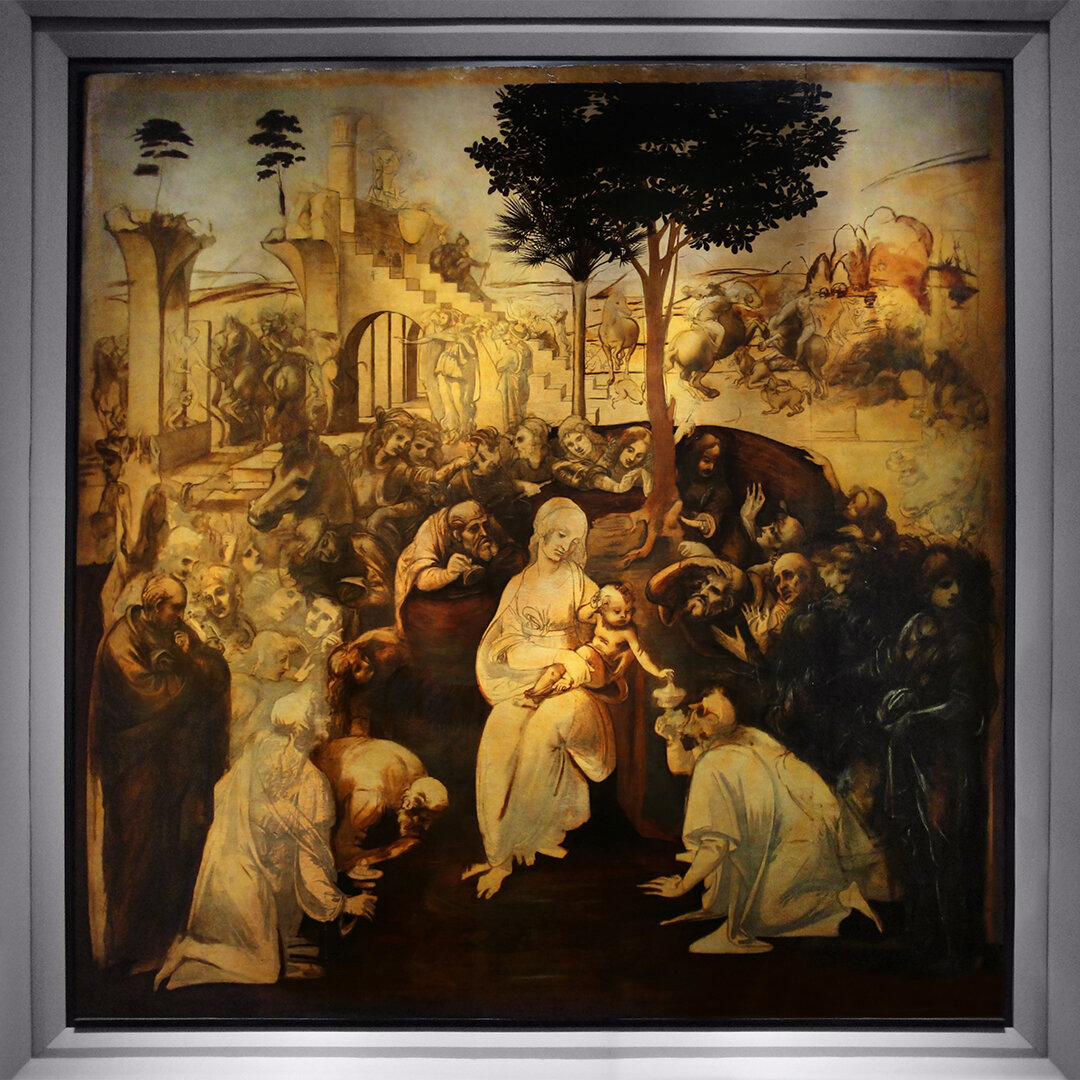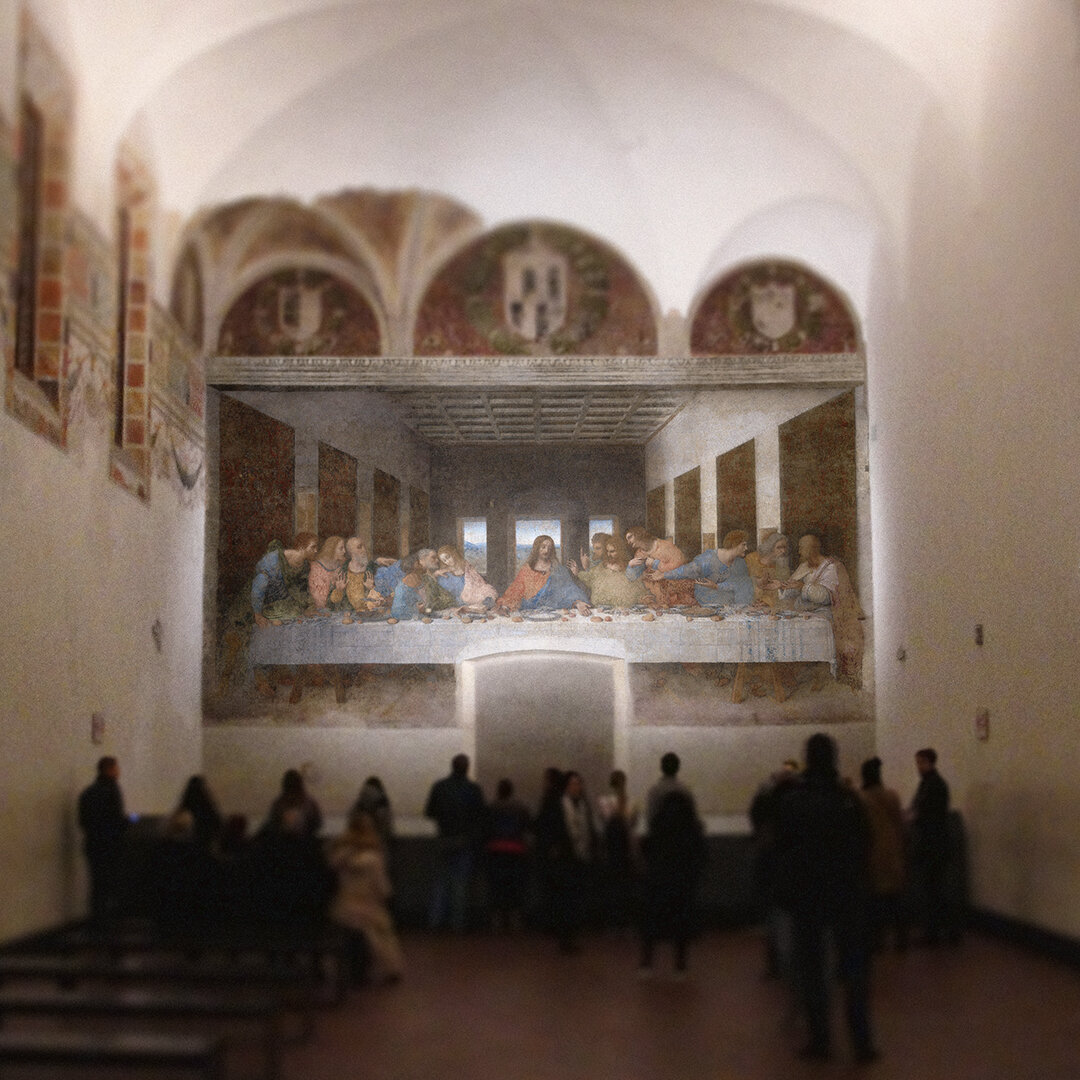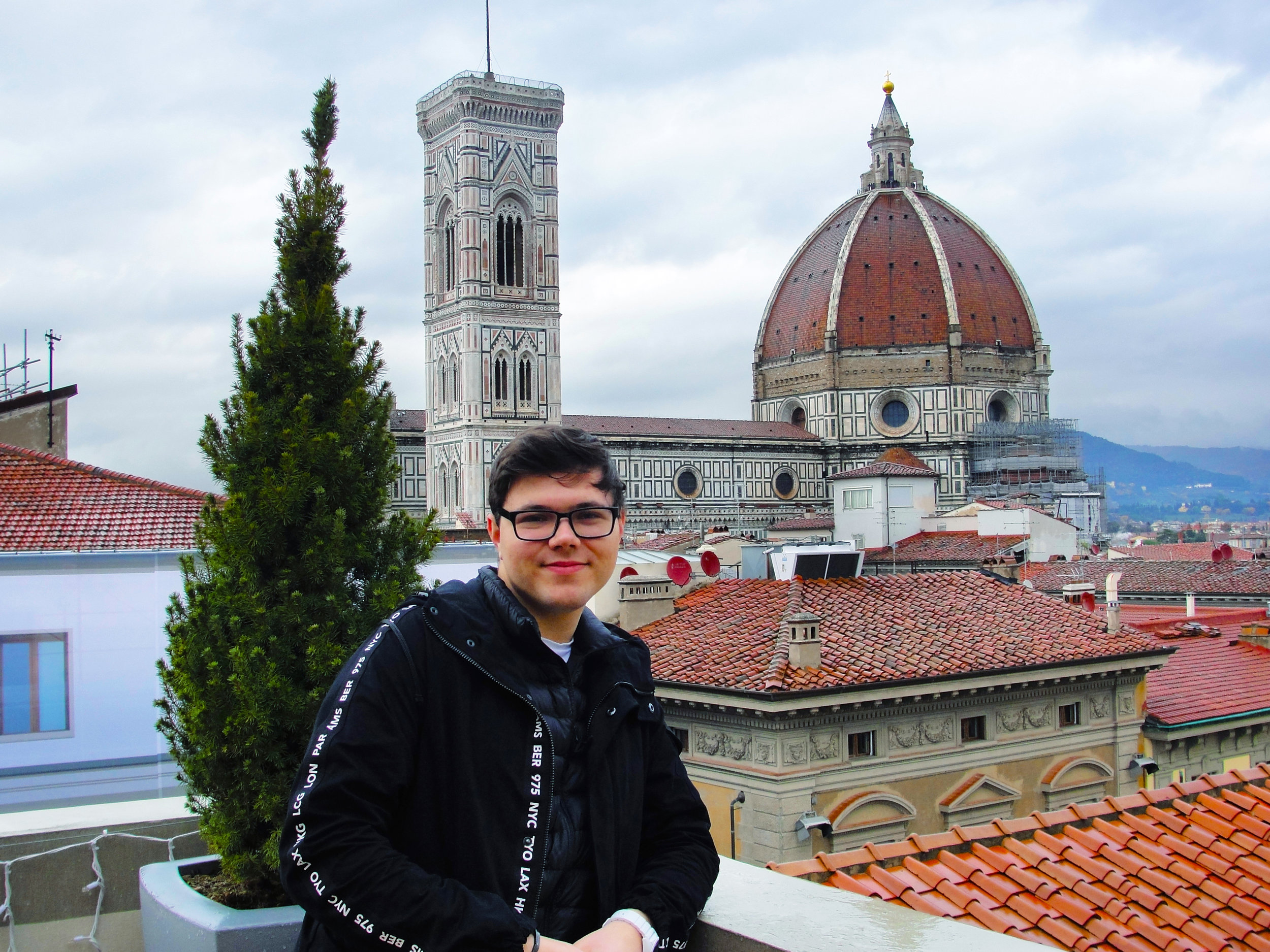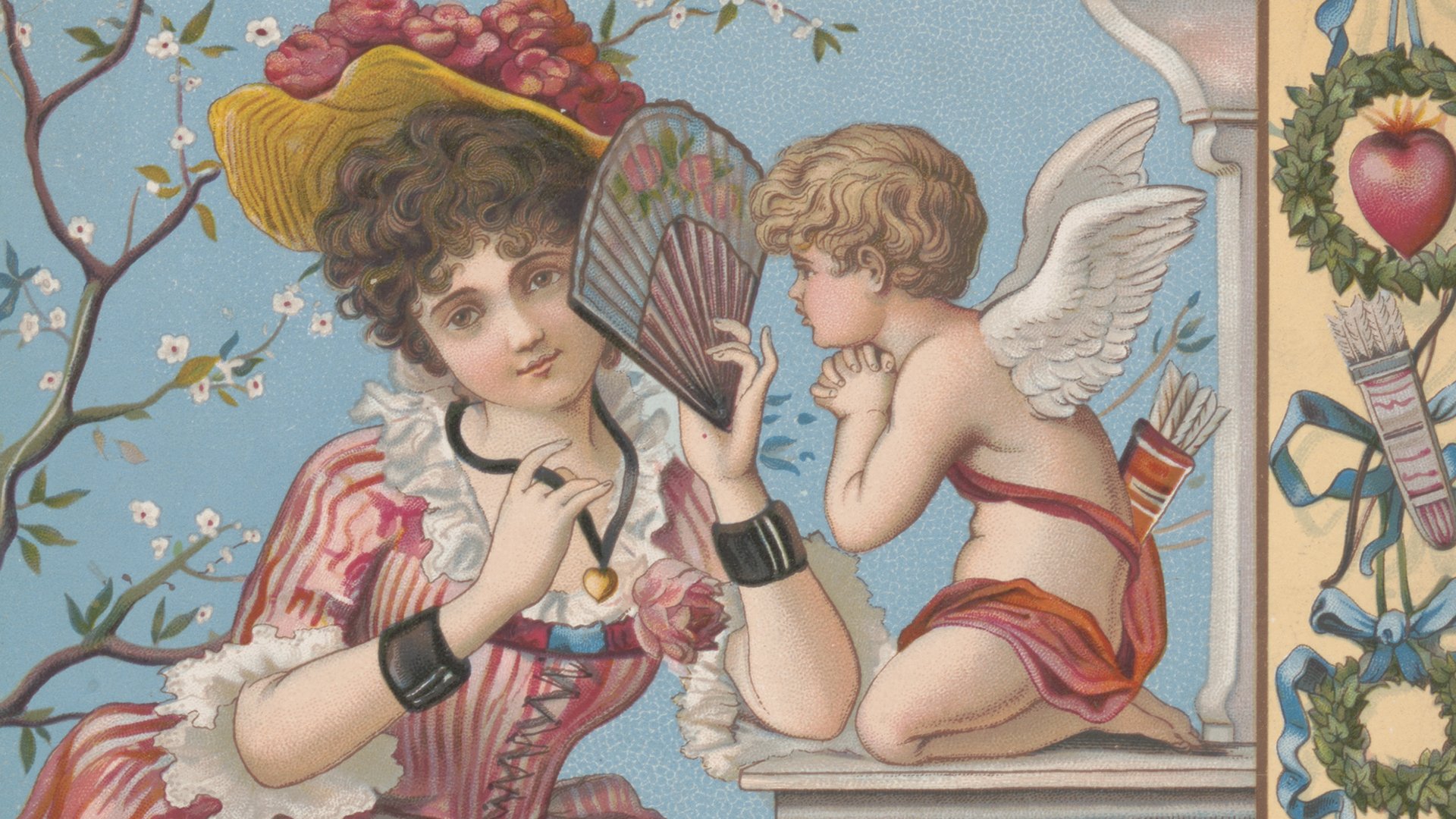About My Favorite Da Vinci's and Where to See Them
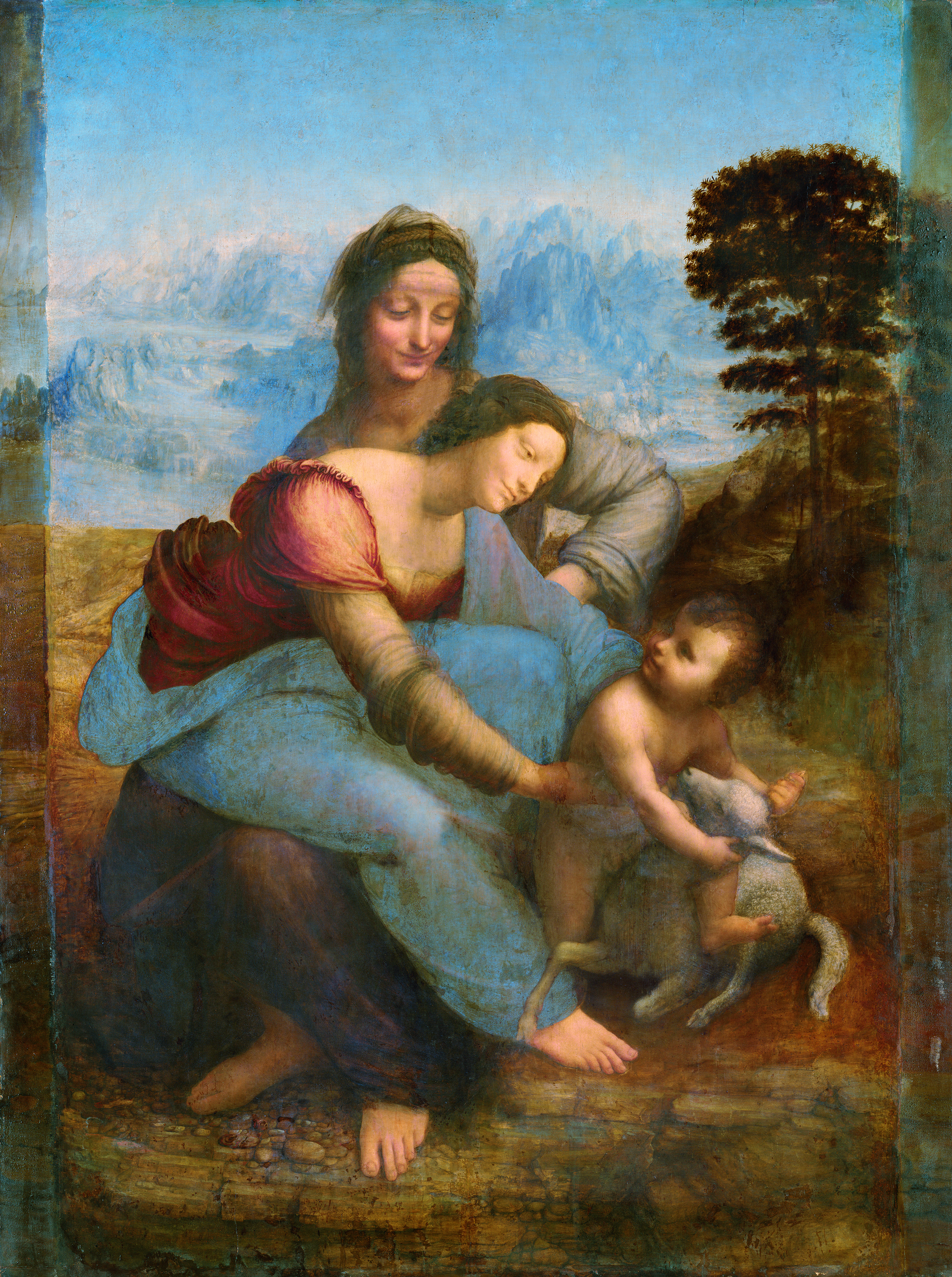
Yesterday, April 15th, was Leonardo da Vinci’s 569th birthday. Today he is one of the most celebrated artists in history! Here are eight of my favorite Da Vinci works, ranked.
Cover photo: The Virgin and Child with Saint Anne, oil on wood, by Da Vinci (circa 1510). Photo-composite by Daniel Beauchamp.
Who was Leonardo Da Vinci?
Leonardo was born in 1452, as an illegitimate son of a notary and a peasant girl. He was raised in the Tuscan town of Vinci by his father, Ser Piero and his step-mother. It was then customary for Italians to take the name of their birth city and thus he became known as Leonardo da (from) Vinci.
Had Leonardo been legitimate, his name would have been Leonardo di Ser Piero da Vinci. Because Leonardo was illegitimate, he was not allowed to attend university, or to become a notary like his privileged father. Ultimately, this was fortuitous for Leonardo, as it allowed him to follow creative pursuits.
Around 1466, after Leonardo’s talent had become evident, Leonardo and his family moved to Florence. His father, Ser Piero, arranged for Leonardo to become an apprentice to a client, famous artist Andrea del Verrochio. According to biographer Giorgio Vasari, Verrochio was so stunned by Leonardo’s talent that he gave up painting altogether (some historians allege this to be hyperbole).
Author Ross King posits it was Verrochio who awakened Leonardo’s interest in poetry, music, and geometry. Certainly Verrochio’s connections to the Medici would serve Leonardo well.
The Medici, a wealthy banking family, ruled Florence and they served as the city-state’s primary patrons of art. Florence served as Italy’s central banking city, with many Medici banks in other cities. Trade and commerce fueled migration and wealth, leading to a transfer of ideas and innovation.
Leonardo was the Renaissance man! He pursued his interests as an artist, painter, and inventor. He studied zoology, botany, geology, geometry, mathematics, optics, machinery, aerodynamics, engineering, and more. Leonardo was interested in everything and perhaps that is why he had such difficulty completing anything. He once wrote, “Who will tell me if anything was ever finished?”
Leonardo pioneered the field of anatomy. In secret, he dissected corpses to better understand the human body and to assist his drawings. This was a direct rebuke of the Catholic Church, which discouraged the act.
As an artist, Leonardo refined concepts of perspective and proportion. He developed the technique of graduate shading known as sfumato (translating to “vanished”) and perfected tonal contrast, chiaroscuro (translating as “light-dark”).
Following the Middle Ages, the Renaissance saw a rediscovery of the classical world, namely ancient Greece and Rome. Italy was a collection of city-states dominated by feudalism. The Catholic Church was at the height of its power, protecting Italy from the French and responsible for preventing the Ottoman invasion of Italy. In 1452, the year of Leonardo’s birth, Johannes Gutenberg invented Europe’s first printing press, increasing the spread of knowledge. The Ming Dynasty of China closed trade with outsiders, leading to greater investment and trade in Italy.
During the Renaissance, art was reserved for the rich and powerful. Artists were commissioned to create works for patrons like nobles, royalty, or the Catholic Church. Leonardo’s talents ensured that he enjoyed a long and prosperous life. He died at the age of 67, well beyond the average life expectancy of forty years. Today Leonardo Da Vinci is one of the most celebrated artists in history!
8. Saint Jerome
(Vatican Museums, Vatican City)
Saint Jerome, “San Gerolamo” in Italian, was a scholar and a monastic leader, best known for being the first to translate the Bible from Hebrew and Greek into Latin.
Leonardo’s Saint Jerome is unfinished, abandoned in an early stage of sketching. Still, his style and skill is evident, particularly in the geology of the background and the gaunt musculature of the fasting scholar.
According to legend, Saint Jerome once removed a thorn from the paw of an injured lion. Leonardo included the friendly lion, sitting near the scholar’s feet but overall the symbolism in the work is quite minimal, omitting the usual Bible, crucifix, or skull prominent in other representations of Saint Jerome.
Nothing is known about the destination or commissioning of the painting. This work is among Leonardo’s most dynamic and emotive. Saint Jerome is frozen in penitence, holding a rock in the hand of his outstretched right arm, about to beat his bare chest. His expression is forlorn and the lion appears to roar in empathy.
I didn’t have nearly enough time to appreciate the work, as I went to Vatican City with class, while studying in Florence; we literally sprinted through the museums. I’m eager to visit again someday, and to take a better look.
7. Adoration of the Magi
(Uffizi Galleries, Florence, Italy)
The Adoration of the Magi refers to the Biblical Epiphany, when three wise men, or three kings, came to visit the Christ child after his birth, to pay homage to Jesus as king of the Jews. This was a significant event, a display of secular — and powerful — men recognizing the holy infant.
This work is Leonardo’s largest ever attempt on wood. He has sketched an elaborate gathering of people, witnessing the event, with the Virgin and Child in the center. The three wise men kneel in the foreground, bearing treasured gifts of gold, frankincense, and myrrh. Leonardo has omitted any semblance of a shed or manger, instead including a ruined temple in the distance.
Notice the many horses throughout the work. The horse was one of Leonardo’s favorite animals. They played essential roles in both military and civilian life, and he likely enjoyed drawing their musculature.
In Florence, Epiphany, also known as Three Kings Day, was celebrated with a feast and parade every year, at least since 1390. Epiphany takes place January 6th and continues to be celebrated today.
The painting was commissioned by the Church of San Donato in Scopeto shortly before Leonardo left Florence for Milan. He never completed the work and the Church would later commission Filippo Lippi. I can only imagine what a masterpiece this would have been. Lippi’s version, painted with Fra Angelico, features a wholly different composition and is also part of the Uffizi collection. Leonardo’s sketch is back on view after a recently completed six year restoration.
6. Mona Lisa
(Louvre, Paris, France)
Her eyes follow you around the room. Her smile is all knowing. Mona Lisa is the most famous painting in the world, and therefore Leonardo’s best known work. Many scholars believe Mona Lisa to be a portrait of Lisa Gherardini, the wife of Francesco del Giocondo, a wealthy silk merchant, nicknaming the work La Gioconda.
Close inspection reveals a veil, which may have symbolized widowhood or married chastity. The work includes both hands, which was unusual at the time. While this was not Leonardo’s first angled portrait, Mona Lisa is credited as popularizing the three-quarter view in portraiture.
The painting attracted the world’s attention when she was first stolen. By 1900, Mona Lisa had become so popular, visiting her in Paris was a secular pilgrimage.
This was among his final works. Leonardo was an terrible perfectionist and he carried Mona Lisa around with him for years, continually adding glazes of oil, and he never considered the painting finished.
The Louvre is the most visited museum in the world and the viewing experience of La Gioconda is nothing short of nightmarish. The painting is Leonardo’s smallest, roped off an arm’s length away, encased behind bulletproof glass, and swarmed by visitors. It is impossible to enjoy the painting for more than thirty seconds, let alone see any of the detail. The last time I visited, an Italian couple cursed at me while I took a selfie.
5. The Virgin and Child with Saint Anne
(Louvre, Paris, France)
Mona Lisa is just one of several works by Leonardo in the Louvre. The Virgin and Child with Saint Anne is believed to have been commissioned by King Louis XII of France to celebrate the birth of his only daughter Claude, in 1499, but the work was never delivered to him. Anne was the patron saint of both infertile and pregnant women; Anne was also the name of his wife.
Mary looks forlorn, aware of Jesus’ fate, as the Christ child plays with a lamb, an allusion to his ultimate sacrifice in death for mankind. This is one of my favorites of Leonardo’s compositions. He represents three generations intertwined which gives the work an eternal quality.
Fra Pietro da Novellara, acting as an agent for patron Isabella d’Este, described an early cartoon on the subject by Leonardo, “depicting a Christ child about one year old who, almost slipping from his mother’s arms, grasps a lamb and seems to hug it. The mother, half rising from the lap of St. Anne, takes the child as though to separate him from the lamb, which signifies the Passion. St. Anne, also appearing to rise from a sitting position, seems to wish to keep her daughter from separating the Child and the lamb, and perhaps is intended to represent the Church, which does not wish the passion of Christ to be impeded.”
Because the two mothers appear to be the same age, the — now largely discredited —psychoanalyst Sigmund Freud viewed this work as a self-portrait of Leonardo’s, with Saint Anne representing Leonardo’s peasant birth mother and Mary as his step-mother.
4. Lady with an Ermine
(National Museum in Krakow, Poland)
Around 1482, Leonardo moved to Milan in hopes of working as an architect and military engineer. Lady with an Ermine was among Leonardo’s first paintings in the city-state, commissioned by the Duke of Milan, Ludovico Sforza. This was to be a portrait of the Duke’s mistress, the 15 or 16 year old, Cecilia Gallerani.
Ermine were considered symbolic of purity and chastity, yet in the arms of Sforza’s mistress, the ermine appears phallic, alert and erect. Gallerani is perfectly composed as she holds the animal. It has been discovered that this final version was the third iteration. The first composition did not include an ermine and the second version’s ermine was, for whatever reason, deemed unsatisfactory. Perhaps Leonardo was referring to the illicit sexual nature of their relationship or maybe he was suggesting Gallerani had tamed l’Ermellino Bianco.
Lady with an Ermine was purchased around 1800 by Adam Jerzy, the son of Princess Izabela Czartoryska, and donated to a museum. The work was erroneously considered to be La Belle Ferronnière, a portrait of the mistress of King Francis I of France. An inscription was added in the upper left with nearly every word misspelled: “LA BELE FERONIERE / LEONARD D’AWINCI”. The Polish alphabet does not have the letter V, hence the replacement with W, which makes the same sound, however there is no possible explanation for the remaining mistakes.
Lady with an Ermine is my favorite of Leonardo’s portraits. The work is the only painting by Leonardo in Poland and is now property of the Polish Government. Lady with an Ermine has moved around Krakow but is now located in the National Museum.
3. Annunciation
(Uffizi Galleries, Florence, Italy)
The Annunciation is the Biblical announcement by the Angel Gabriel to the Virgin Mary that she would bear a son by the power of the Holy Spirit. Leonardo’s Annunciation is one of his earliest works, painted approximately five years after his move to Florence. Nothing is known about its original location or who might have commissioned it.
The Annunciation was one of the most popular subjects during the Renaissance. Fra Angelico’s Annunciation had been painted 30 years prior. Common characteristics of Annunciation paintings included gardens, Mary praying or studying scripture, and Gabriel appearing to the left. Leonardo appears to have studied the wings of real birds as reference.
Leonardo here displays his interest in botany, as he fills the panel with detailed flowers and a variety of trees. Gabriel offers the Virgin a lily, a flower symbolic of chastity. Notice the open door to the right of the panel, revealing a bed, perhaps alluding to procreation.
The work is completely emotionless, the Virgin Mary shows no sign of surprise by the appearance by the Angel, gently lifting her hand in greeting. Leonardo captures a combination of nature and narrative that establishes his talent in the prevailing artistic traditions of the time, including the use of one-point perspective with a clear vanishing point.
2. The Virgin of the Rocks
(The National Gallery, London, England)
In his early days in Milan, in 1483, Leonardo was commissioned to create an altar by a Confraternity of monks for the Chapel of the Immacolata in San Francesco. The altar was to be completed by Leonardo and two brothers within the year, for the Feast of the Immaculate Conception in December, giving them seven months.
Leonardo had developed a reputation for lateness, and there was even a clause included that if he left town without completing his share, as had occurred with Adoration of the Magi, he would receive no payment. As feared, Leonardo missed the deadline.
It is unclear when the first altar was completed but a decade later the work was not presented to the Confraternity. Leonardo and the surviving brother, Ambrogio de Predis became involved in a legal battle with the Confraternity, who refused to pay for the original promised sum. This was attributed to both the incredible lateness, as well as the fact that Leonardo had strayed far from the description provided in the contract: The Christ Child was to sit upon a golden platform, with God the Father hovering overhead.
In the first iteration, Leonardo omitted the presence of a nimbus. The original work ultimately landed in France, at the Louvre. Leonardo painted a replacement for the monks, which now resides in England’s National Gallery.
The work is among Leonardo’s most mysterious. The grotto setting is both unusual and alluring. The mountains are reminiscent of those featured in The Virgin and Child with Saint Anne. The androgyny of the archangel is also curious.
1. The Last Supper
(Santa Maria delle Grazie, Milan, Italy)
The Last Supper, or L’Ultima Cena, was commissioned by the Duke of Milan, Ludovico Sforza, for the Dominican monastery of Santa Maria. The subject was a popular choice for refectory walls, where nuns and monks would eat their meals. In this Biblical scene, Jesus shares the titular last supper with his twelve disciples, and declares that one of them will betray him. You can almost hear their exclamations, “Lord is it I?”
This was a grand study for Leonardo, in his manuscripts he labeled each apostle and described their attitude and emotions. Each single one is filled with motion and passion in a complex choreography of gesticulation. Judas, the traitor, is the only apostle who appears silent, reaching for food. It is the most intricate of Leonardo’s narratives. The detail has been lost but the psychology remains.
Leonardo began the mural grudgingly, interrupting his plans to create a giant horse sculpture dedicated to Francesco Sforza. Nevertheless, The Last Supper is a masterpiece. The fresco is an expert use of one-point perspective, which draws the eye to Jesus, and functions as a beautiful extension of the space. The painting itself is almost thirty-feet long.
It is nothing short of miraculous that the mural survives today. This was Leonardo’s first and only fresco. Rather than using the traditional method of wall painting, in which paint was applied to wet plaster, Leonardo invented his own process. He painted directly onto dry plaster, which allowed him to work slowly, with greater precision. Due to Leonardo’s experimental paint process, The Last Supper began to deteriorate almost immediately.
The Last Supper underwent a 20-year-long restoration, completed in 1999. Today, the fresco is carefully climate controlled and visitors are only allowed inside for fifteen minutes at a times. Tickets must be scheduled in advance.
P.S. Questions!
Did you know Da Vinci translate to “of Vinci”? Do you have a favorite Da Vinci? Are you going to see any of his works this year?


